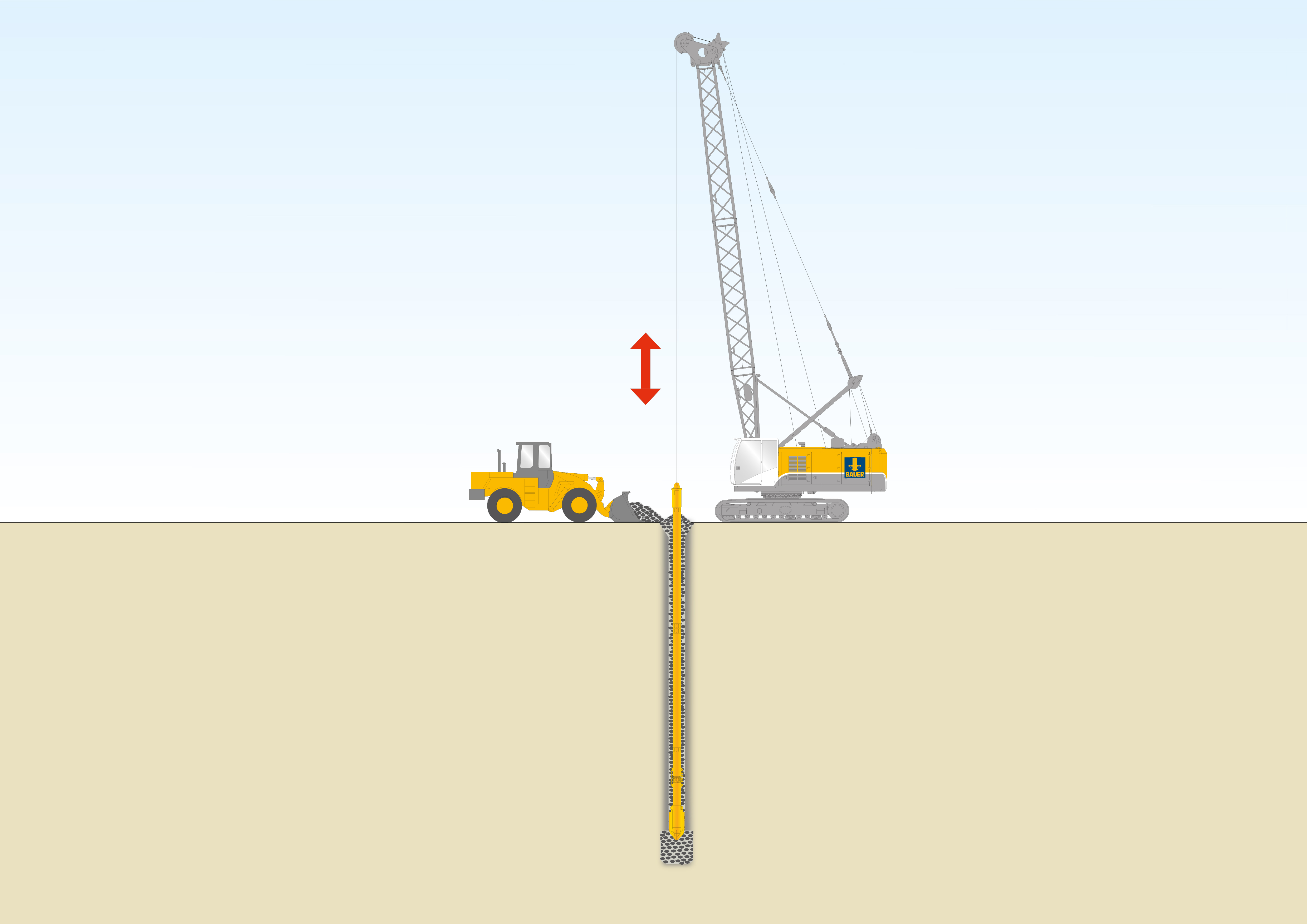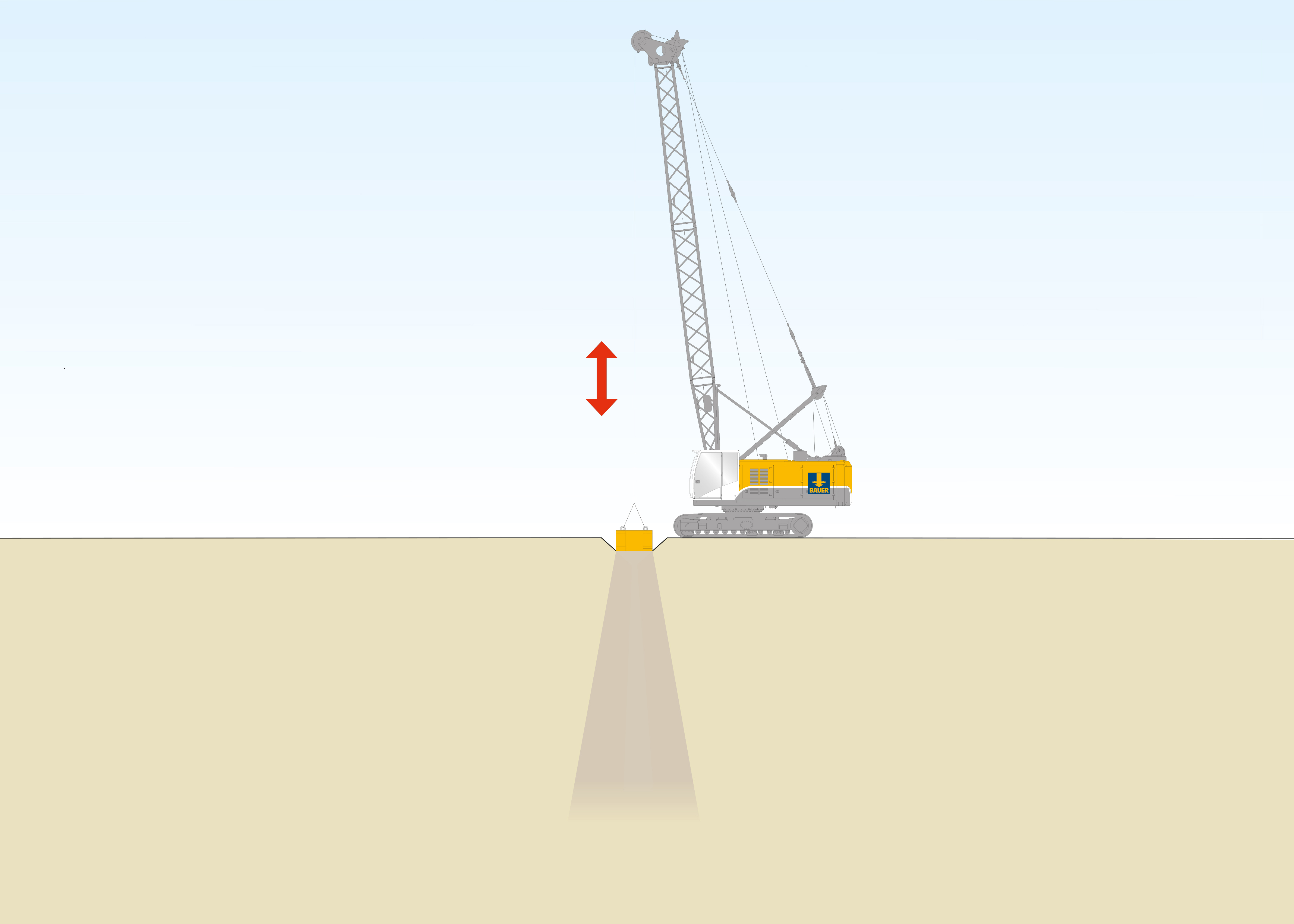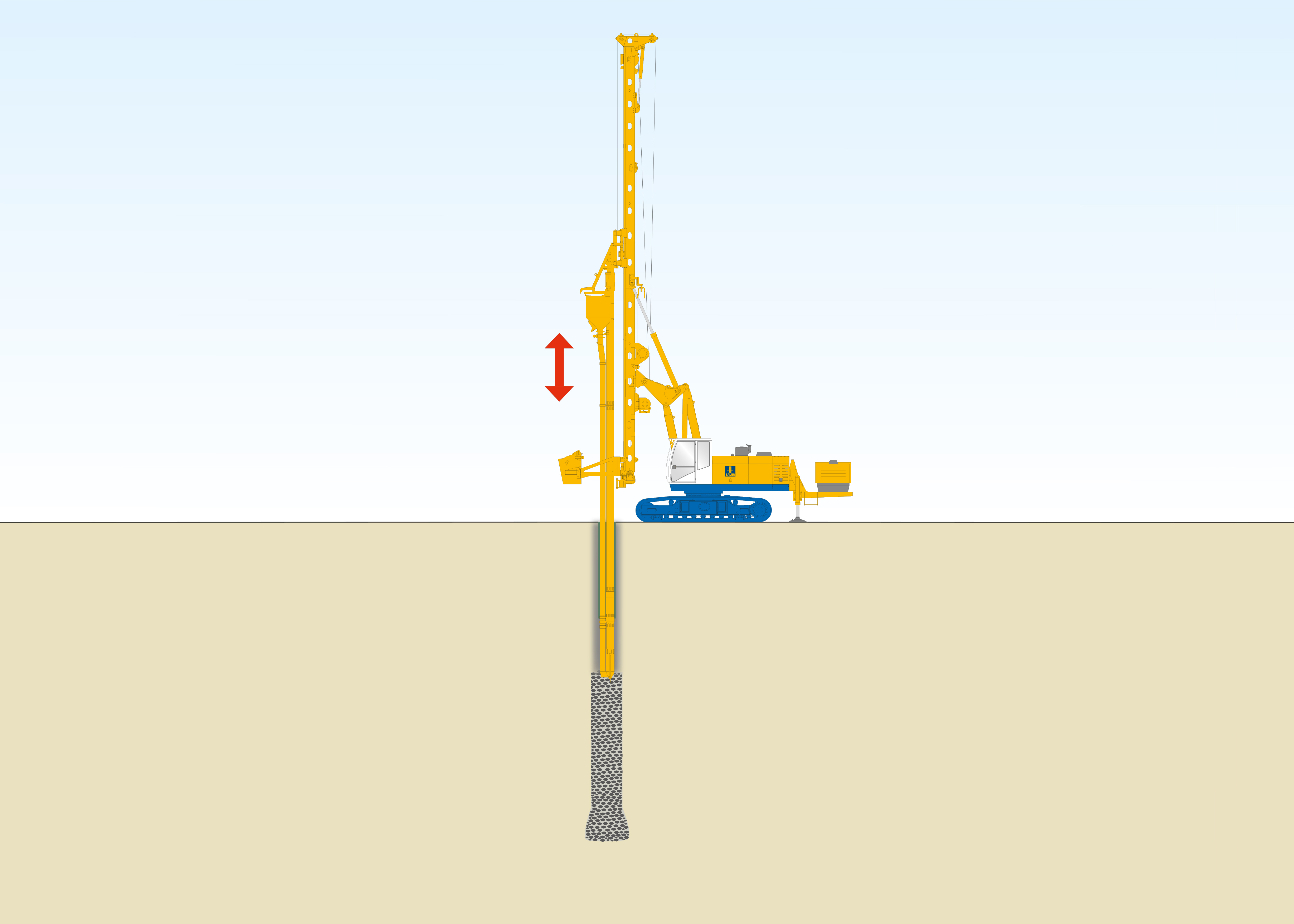Soil improvement
An increasing number of buildings are being constructed in areas with particularly difficult subsoil conditions. The methods we implement for soil improvement minimize settlements, increase the load-bearing capacity of the subsoil and ensure the stability of slopes. After all, we are specialists for challenging projects, and by using suitable methods we make sure that every construction project is future-proof.

Vibro Compaction (VC)

Dynamic Compaction

